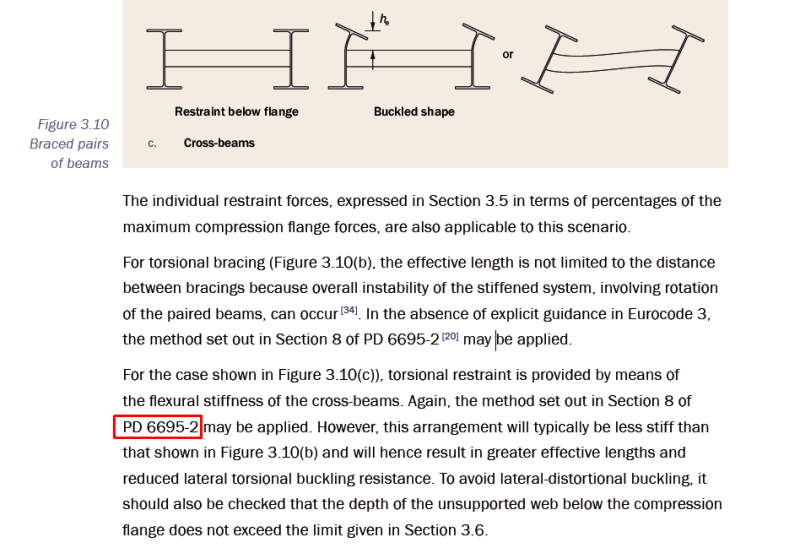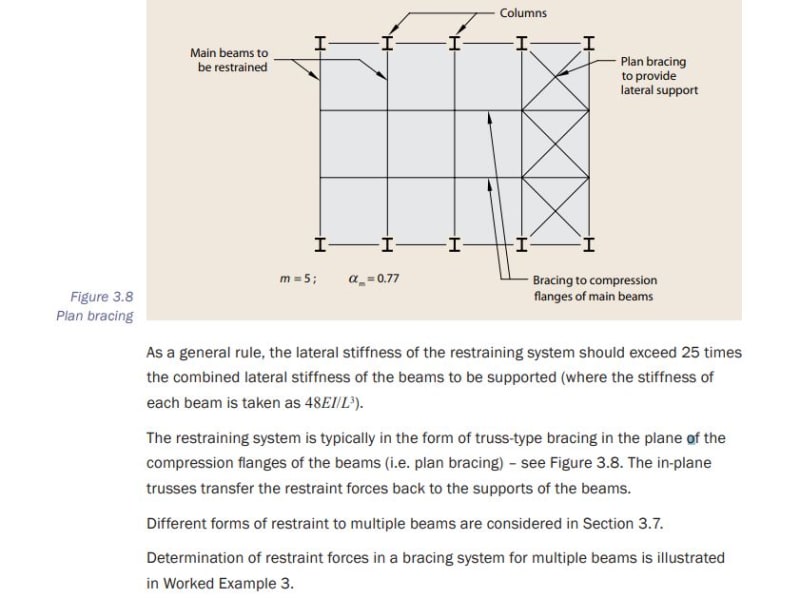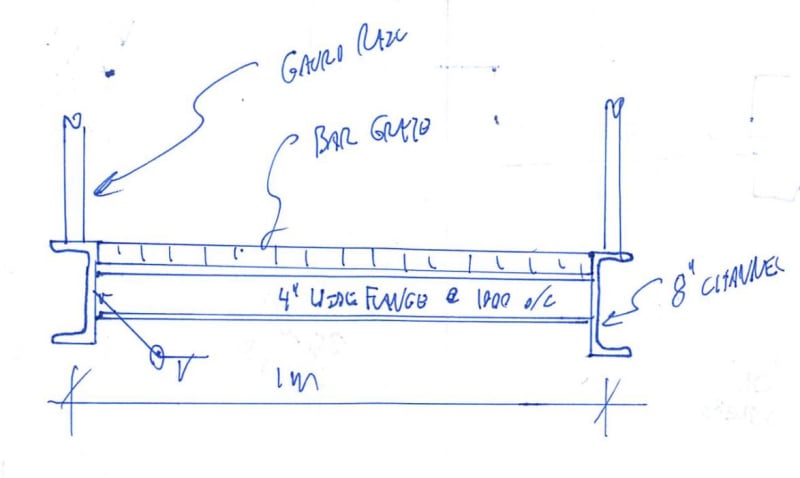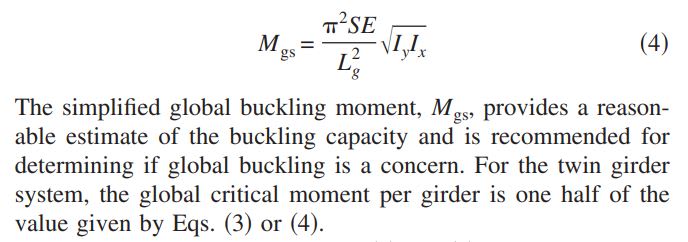Gents,
I am looking into design principles of aprox. 1m wide walkways as follows: side beams are UNP profiles (expected size about UNP200) and transverse beams per 1-1.2m, either fully welded IPE80-IPE100 in the 'center' of the UNPs; the load, length and support conditions for walkways following these principles vary (e.g. one walkway can be simply supported 10m span, another can be 6m double spanned). Lateral stiffness of the walkways is intended to be achieved considering Vierendeel action, rather than the more common solution of providing horizontal bracing. Because length, support conditions (and thus bending moment diagram shape) and loads vary, at this point I am looking into opinions and / or literature related to a general case, so to say. What I am specifically interested for this general care are the LTB parameters of the UNPs in the described layout.
In SCI p.360 (Stability of steel beams and columns, freely available) I have found some reference to this type of situation (screenshot below); it seems further details that could be of use are given in this PD 6695-2 document which I do not currently have. Anyone around here familiar with this doc.?
Now, I should of course note I it could very well be that for many of these walkways, it will be other criteria that govern the UNP members e.g. deflections, eigenfrequency.
Any thoughts on the subject or directions to relevant literature are much appreciated.

I am looking into design principles of aprox. 1m wide walkways as follows: side beams are UNP profiles (expected size about UNP200) and transverse beams per 1-1.2m, either fully welded IPE80-IPE100 in the 'center' of the UNPs; the load, length and support conditions for walkways following these principles vary (e.g. one walkway can be simply supported 10m span, another can be 6m double spanned). Lateral stiffness of the walkways is intended to be achieved considering Vierendeel action, rather than the more common solution of providing horizontal bracing. Because length, support conditions (and thus bending moment diagram shape) and loads vary, at this point I am looking into opinions and / or literature related to a general case, so to say. What I am specifically interested for this general care are the LTB parameters of the UNPs in the described layout.
In SCI p.360 (Stability of steel beams and columns, freely available) I have found some reference to this type of situation (screenshot below); it seems further details that could be of use are given in this PD 6695-2 document which I do not currently have. Anyone around here familiar with this doc.?
Now, I should of course note I it could very well be that for many of these walkways, it will be other criteria that govern the UNP members e.g. deflections, eigenfrequency.
Any thoughts on the subject or directions to relevant literature are much appreciated.




